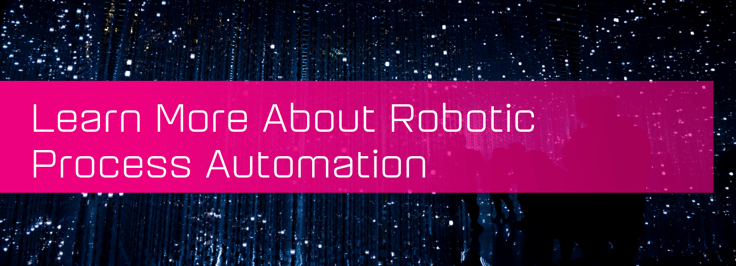
Does the latest buzzword “RPA” sound familiar? If not, we’ll bring you up to speed.
What is RPA?
Simply put, Robotic Process Automation (RPA) is made up of:
Bots – which refers to an entity that can mimic human actions,
Processes – a sequence of steps that lead to an activity or task, and
Automation – tasks that happen automatically without human interaction.
How does RPA work?
RPA is an application of technology, governed by business logic and structured inputs, aimed at automating repetitive business processes. This is done by configuring software to capture and interpret applications for processing a transaction, manipulating data, triggering responses, and communicating with other digital systems. There are many RPA scenarios each programmed to automate jobs in your ERP system.
Here’s are some ideas…
Example 1
RPA can easily manage processes like importing bank statements and capturing the entries directly into your ERP. This process is repetitive, time-consuming, and requires accuracy. As the bank statement is downloaded, the RPA will start to work irrespective of the time of day or week and as many times as required. This, in turn, frees up human resources to manage other critical tasks in your business.
Example 2
Another example would be a company selling electrical goods with a business requirement to increase their prices multiple times per month, due to supply chain constraints that impact costs. Say the branch in question had 4 staff members, but due to recent retrenchments, only 1 person handles the processing of the price increases. They have 9 532 product items and update each price individually various times in a month. This again is a very time-consuming and monotonous exercise that requires accuracy. The processing can easily be replicated by RPA.
The result?
The current process takes approximately 2 hours to complete across the 22 branches simultaneously. The RPA process will greatly decrease this time, be 100% accurate, and increase each branch’s efficiency.
Example 3
Assume you get price increases from suppliers on a regular basis and these are supplied in a format that requires data cleansing first, prior to being imported… Both the data cleansing and importing process can be automated via an RPA and exception reporting can be activated.
Below are a few additional benefits your business can enjoy by implementing RPA:
- Less risk of ‘finger errors’ by staff.
- Less risk of possible duplications and incorrect processing.
- Greater standardisation and consistency, because only one process is followed.
- Data transfer— RPA solutions assist you to transfer data from a CRM to an ERP with greater accuracy.
- Real-time reporting— One of the biggest benefits, is that an RPA system can generate real-time reports on the process updates of various departments.
- RPA solutions can also support companies to increase their revenue margins while addressing compliance-related needs and offering high data protection.
The bigger picture?
RPA implementation can help your business to improve:
- Productivity and efficiency (which in turn saves you money).
- Reliability and accuracy.
- How your data is secured.
- How data and analytics is produced for crucial reports.
- Customer service.
- Business processes, by automating redundant, repetitive tasks.
- Employee morale, through greater process efficiencies.
To book a demo and learn more, please visit: https://info.kerridgecs.co.za/kcs-sa-request-a-demo
Find out more about Kerridge Commercial Systems' innovative solutions at kerridgecs.co.za.



